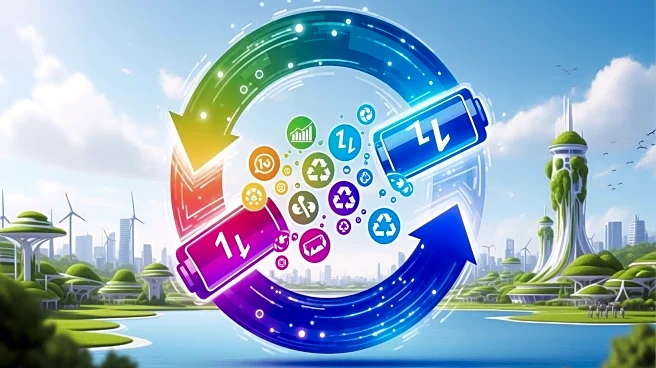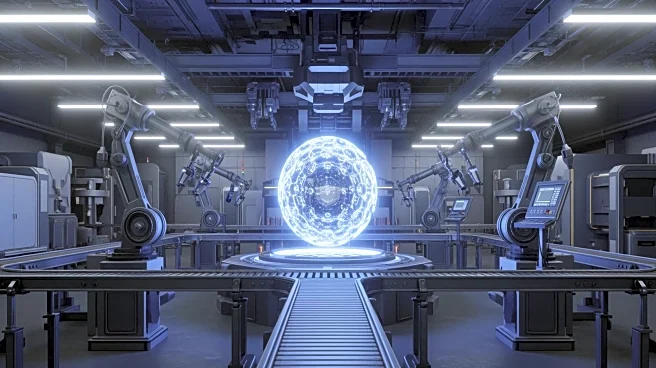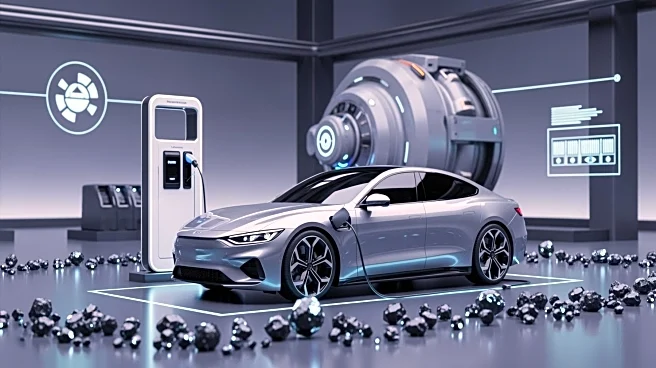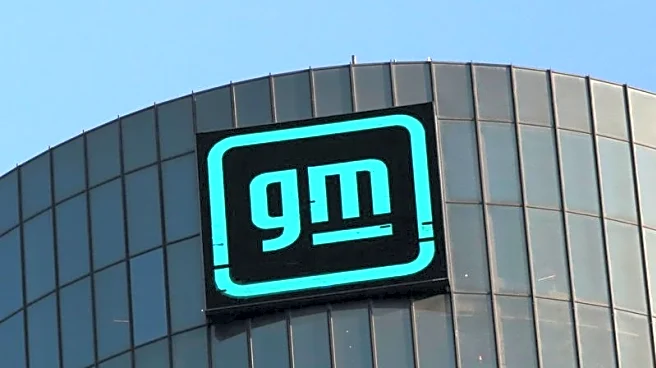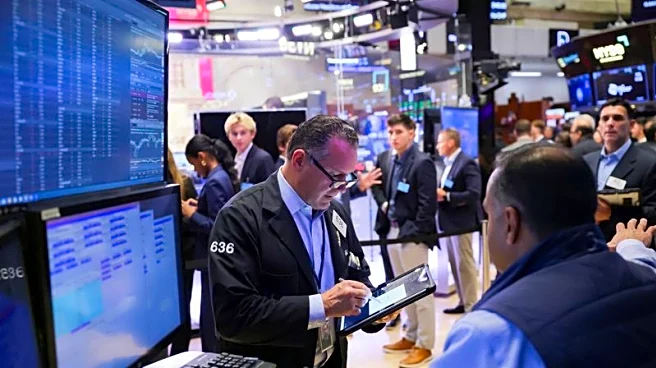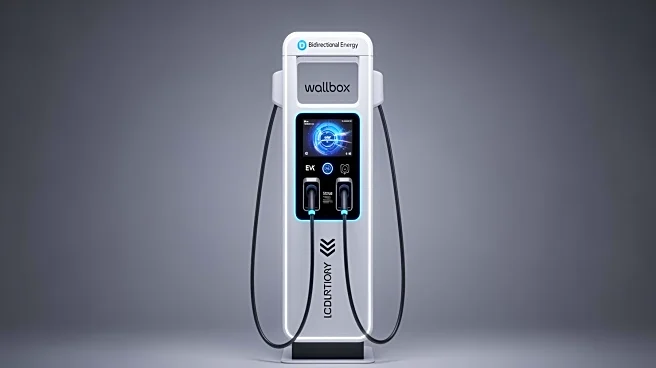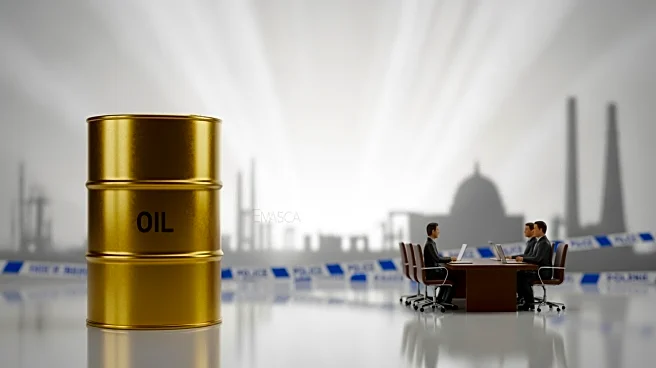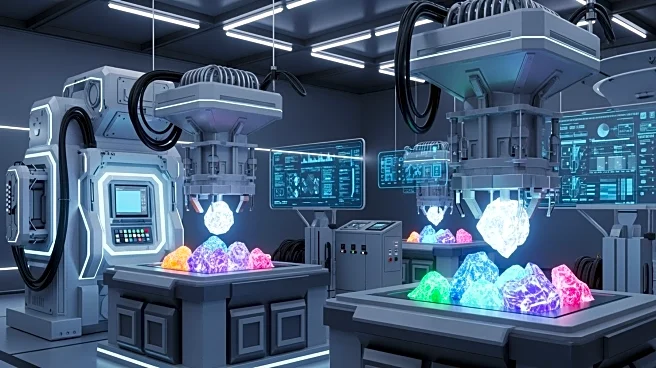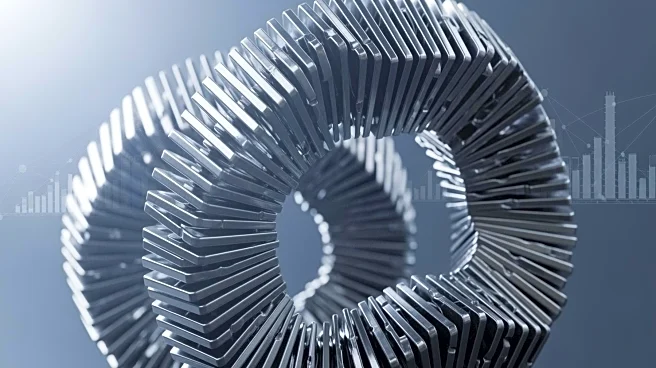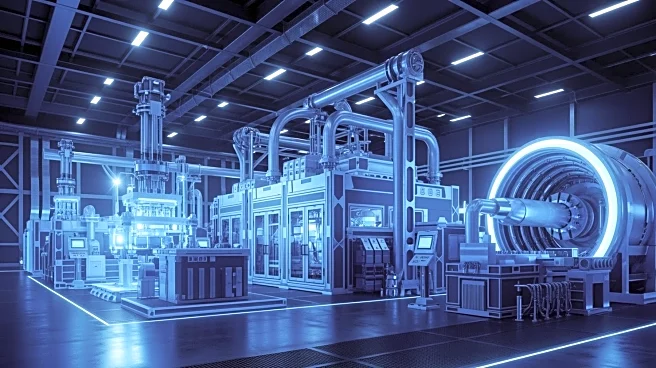What's Happening?
A recent study published in Nature highlights the potential for a circular economy strategy to significantly reduce carbon emissions from the lithium-ion battery supply chain. The research, led by Yufeng Wu and colleagues, indicates that global cooperation
and region-specific regulations could cut emissions by an average of 35.87%. The study identifies mining as the largest contributor to emissions, responsible for 38.52% of the total, while producing only 18.78% of the battery's economic value. Conversely, cathode production, which generates 42.56% of the battery's value, accounts for 34.82% of emissions. The study suggests that recycling metals through a circular economy could lead to substantial emission reductions, with potential regional decreases of 39.14% in the U.S., 37.28% in the European Union, and 42.35% in China.
Why It's Important?
The findings underscore the importance of adopting a circular economy approach to address the environmental impact of lithium-ion batteries, which are crucial for renewable energy applications like electric vehicles. By reducing emissions, this strategy could enhance the sustainability of these technologies, which are often criticized for their carbon footprint. The study also highlights a 'value-emission paradox,' where less economically valuable supply chain segments produce higher emissions. Addressing this imbalance could lead to more efficient and environmentally friendly production processes. However, the success of this approach depends on international collaboration and equitable agreements, as some countries may benefit more financially from recycling efforts.
What's Next?
The implementation of a circular economy for lithium-ion batteries will require robust international agreements and region-specific policies. Stakeholders, including governments, manufacturers, and environmental organizations, will need to collaborate to establish effective recycling systems and regulations. This could involve investments in recycling infrastructure and technology, as well as incentives for companies to adopt sustainable practices. The transition to a circular economy could also drive innovation in battery design and materials, further reducing emissions and enhancing the overall sustainability of the supply chain.
Beyond the Headlines
The shift towards a circular economy for lithium-ion batteries could have broader implications for global trade and economic equity. As countries negotiate agreements, there may be tensions over the distribution of financial benefits and responsibilities. Additionally, the focus on recycling and emissions reduction could spur advancements in battery technology, potentially leading to new market opportunities and competitive advantages for early adopters. This transition may also influence consumer perceptions and demand for electric vehicles and other battery-powered technologies.
